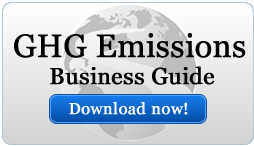 It has officially been announced that the amount of carbon dioxide (CO2) present in the global atmosphere had reached the key level of 400 parts per million.
It has officially been announced that the amount of carbon dioxide (CO2) present in the global atmosphere had reached the key level of 400 parts per million.
This is a milestone. The 400 parts per million stat has long been considered a key ‘tipping point’ in CO2 levels. Scientists at the Scripps Institution of Oceanography in Hawaii, which directs the program that detected this reading, described it as the point at which “irreversible damage to the environment” occurs.
As with most climate science, it’s not a reading that will result in sudden, observable changes in the environment – but it is an indication that human activity has considerably altered the make-up of the planet’s atmosphere. Harm reduction, particularly via air emissions, is the goal from here on in. This was the focus of the recent Paris climate deal.
Policymakers are taking notes – and so should industry in general.
Real Regulation in North America
In Canada, the news comes as the wrangling over carbon taxation, a much-debated way in which to limit emissions, comes to a head. Yesterday saw Canada’s Prime Minister, Justin Trudeau, announce that those provinces that haven’t enacted their own plan for carbon taxation will be swiftly handed one by the Canadian government.
The fire that the Paris Agreement lit is clearly motivating rapid movement on this issue. Trudeau has stated that carbon taxation is a key part of the government’s strategy to minimize the “tragic and devastating consequences” of climate change.
The Prime Minister was bullish in his targets, going so far as to give concrete figures ($10 per tonne emitted in 2018, rising by $10 every year to $50 per tonne in 2022), and stating that provinces that don’t put in place a price, or a cap-and-trade system, would have one hoisted upon them by the Canadian government.
This approach mirrors that broader acceptance that the concept of carbon taxing has been enjoying around North America.
Staying on Top of Correctly Accounting for Greenhouse Gases Remains the Challenge.
From northern neighbor to the south of the border, Mexico will also move towards carbon pricing in November. The government of Enrique Peña Nieto has committed to full implementation of a trial program of pricing carbon emissions in November.
Mexico has more than just improved emissions figures to gain from such a tax. The country’s capital and bustling metropolis, Mexico City, has long struggled with the effects of pollution and poor air quality.
Rodolfo Lacy, the country’s Deputy Minister for Environmental Policy and Planning, has stated this sort of issue has partly driven support for such an approach: “When we have mechanisms that facilitate the reduction of greenhouse gases, we’re implicitly reducing pollution”.
Such moves are not confined to the western hemisphere. China is set to move forward with a carbon trading plan in 2017, beginning the hard process of regulating the emissions of carbon by a massive economy in a way that means real dollars and cents.
India has also officially ratified the Paris deal in the past week, as has the EU’s bloc of highly industrialized member states.
With November’s election looming over future national policy in the United States, the time is now for companies to assess the implications of these global developments. Carbon taxation has gone from a prospect to a very sharp policy initiative that is being actively applied globally, with a detailed application in North America.
Patchwork Taxes
All of the above leads to the question of how industry is to respond to such newly implemented taxes.
It seems evident that there will be a range of interlocking factors that will have to be assessed before any such taxation can be practically applied.
Additionally, there are per-industry permutations in any future legislation that could have implications for many businesses.
The aerospace sector, for example, is still absorbing the recent announcement by the EPA that singled out jet emissions as actively endangering public health by contributing to climate change. Already there have been calls for more stringent moves against the industry’s emissions, which could feasibly include substantial carbon taxes.
While Canada presses forward with carbon taxation that will vary depending on the province, it is possible that any carbon taxation in the United States would also be determined on a state by state basis.
The prospect is there for a possible patchwork combination of both federal and state laws that could come to pass. Keeping on top of such a lattice of laws will no doubt be a test for many EH&S professionals.
Complexity Upon Complexity
If businesses are facing a vista of both individually varying regulations per industry, as well as the prospect of intersecting federal and local regulations, then the actual activity of measuring CO2 emissions could be a very demanding one.
While many businesses are already set up to measure GHGs (greenhouse gases) under current EPA regulations, the gray area is how any potential new taxation would intersect.
If a price was to be set for a certain amount of dollars per tonne of CO2 emitted, there would be immediate financial consequences for any companies that do not correctly factor in these new directives.
Here on the ERA Environmental Compliance blog, we often focus on the ability of well-positioned companies to absorb new regulations and requirements with ease. A lot of this depends on a well-structured and properly implemented software suite that can account for needs that were previously not required (such as exact amounts of carbon emitted).
A good software package will be able to pinpoint exactly how much CO2 is being emitted during essential commercial processes.
At ERA, our software produces reports that can pinpoint, down to the gram, the amounts of carbon that is being emitted during intense combustion processes, as well as capturing and reporting those fugitive emissions that come from more ancillary processes.
This is the kind of preciseness that regulators like to read in compliance reports.
To learn more about how comprehensive reporting can set you down the road to smooth compliance, please feel free to download our free Greenhouse Gas Accounting for Business eBook below for more specific ways in which to improve your reporting.
This blog was co-authored by:


Tags:
Sustainability
October 4, 2016

Comments